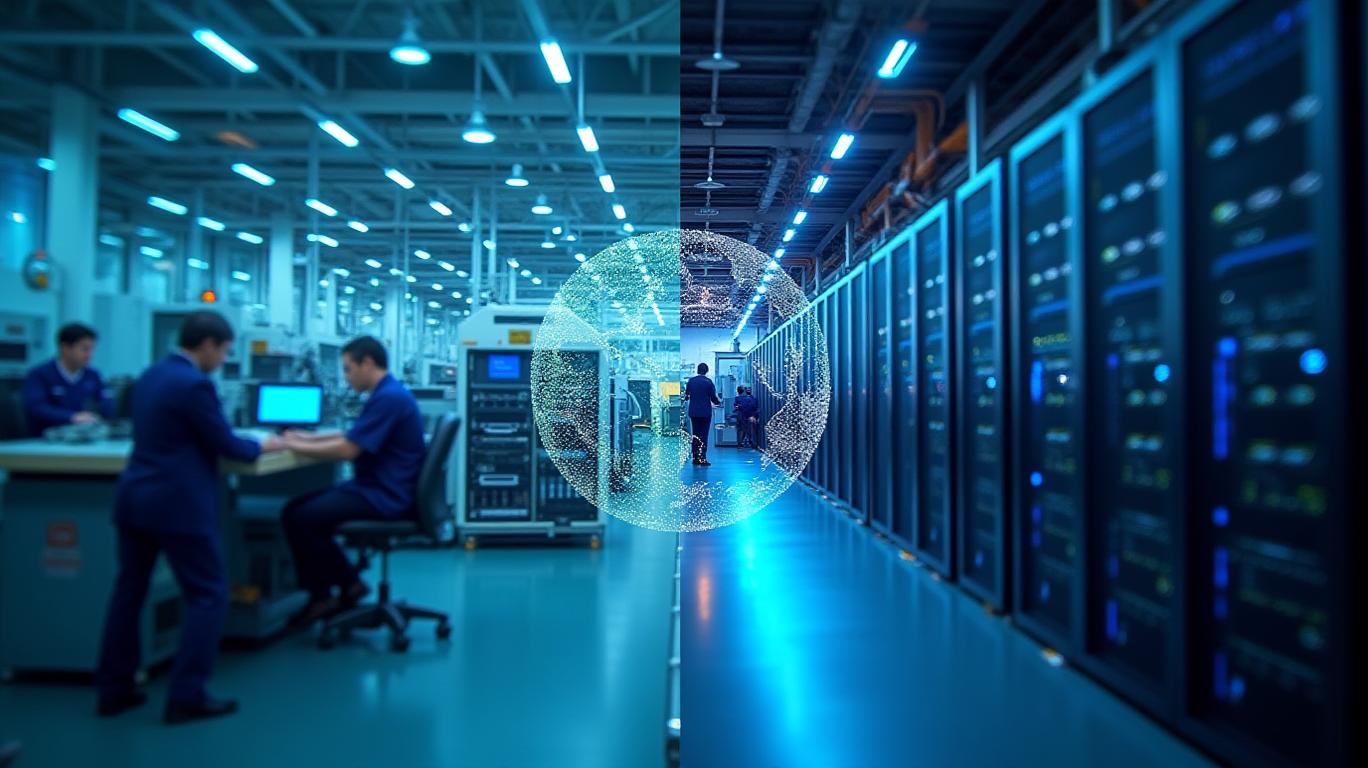Navigating the Semiconductor Crossroads: How Trade Tensions Are Redefining Tech Valuations
The U.S.-China trade war has entered a new phase, with semiconductor and AI hardware sectors at its epicenter. As tariffs, export controls, and geopolitical posturing reshape global supply chains, investors face a paradox: near-term volatility and long-term transformation. For those willing to parse the risks and capitalize on the opportunities, the tech sector offers a compelling battleground.
The Push-Pull of Near-Term Risks
The first quarter of 2025 revealed a sector in flux. Despite new U.S. tariffs targeting Chinese imports—including a proposed 60% levy on non-compliant goods—semiconductor sales surged 23% year-over-year, driven by AI and high-performance computing demand.

This uncertainty has already bitten some players. U.S. electronics sales fell 16% quarter-over-quarter, and Chinese iPhone exports to the U.S. hit a 14-year low. Meanwhile, the Bank of Canada warns that U.S. tariffs could shave 1.6% off its GDP in 2025—a ripple effect that extends beyond borders.
The Capital Expenditure Gamble
The silver lining? Companies are betting big on the future. Despite a 7% quarterly dip in Q1 2025, CapEx rose 27% year-over-year, with memory investments spiking 57%. This isn’t just about surviving tariffs—it’s about dominating AI’s next frontier.
Advanced packaging, high-bandwidth memory (HBM), and leading-edge foundries are now battlegrounds. Taiwan Semiconductor Manufacturing (TSM) and ASML Holding, for instance, are pouring capital into 3nm and EUV lithography technologies—moves that could lock in dominance for years.
Regional Diversification: The New Playbook
China’s installed wafer capacity still leads, but its growth has slowed to 7% year-over-year as geopolitical headwinds bite. Meanwhile, Japan and Taiwan are surging, driven by power semiconductor and advanced foundry investments. For investors, this geographic reshuffling matters:
- Taiwan: Leading-edge foundries like TSM and United Microelectronics Corp (UMC) are prime beneficiaries of U.S. demand for chipmaking resilience.
- Japan: Power semiconductors—critical for EVs and renewable energy—are driving growth at firms like Renesas Electronics.
- Southeast Asia: Vietnam and Malaysia are emerging as low-cost hubs, attracting manufacturers like Jabil Inc. (JBL) to sidestep tariffs.
Automation and Agility: The Winning Edge
The winners will be companies that master two things: cost discipline and supply chain resilience. Jabil’s shift to automation, cutting input costs by 15–18% despite tariffs, is a masterclass in adaptation. Similarly, firms like Intel (INTC) and Samsung are stockpiling critical components to buffer against disruptions.
The Long-Term Opportunity: AI’s Unstoppable Momentum
While trade tensions loom, AI’s rise is a force multiplier. The test equipment sector—up 56% year-over-year—hints at the complexity of manufacturing AI chips, creating a lucrative niche for companies like Applied Materials (AMAT) and Lam Research (LRCX).
Even as nearshoring faces hurdles (e.g., 25% tariffs on Canadian imports), the path forward is clear: invest in companies with diversified supply chains, R&D firepower, and exposure to AI’s $200+ billion data center market.
Act Now—or Pay Later
The semiconductor sector is at a crossroads. Near-term risks are real—geopolitical shocks, stagflation fears, and margin pressures—but the long-term story is one of innovation and consolidation. Investors ignoring this sector risk missing a decade-defining shift.
Focus on three pillars:
1. Leaders in advanced manufacturing: TSM, ASML, and Intel.
2. AI infrastructure plays: NVIDIA (NVDA), AMD (AMD), and Micron (MU) for memory.
3. Geographically agile firms: JBL, Renesas, and ASE Technology (ASTC).
The trade war won’t end soon, but its losers and winners are already being written. The question is: Will you be on the right side of the equation?

Data queries and visuals in this article are illustrative. Actual investment decisions should be made with professional financial advice.

Comments
No comments yet